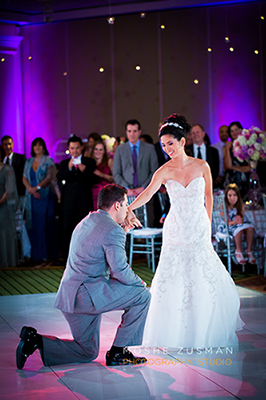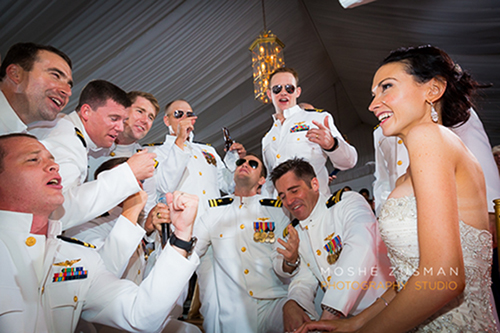The Right Light for any Venue
February 20, 2014 by Admin
 When I started photographing weddings and events almost 10 years ago, I always thought I was doing the best I could. Most of us have a camera and flash, maybe a diffuser or bounce card, you might even venture into a video light held by an assistant chasing you around the party.
When I started photographing weddings and events almost 10 years ago, I always thought I was doing the best I could. Most of us have a camera and flash, maybe a diffuser or bounce card, you might even venture into a video light held by an assistant chasing you around the party.
However, at the end of the day I couldn’t say whole heartedly - yes, I can produce reception photos with vibrant colors, consistent lighting and showcase those photos with the same pride I take in my wedding portraits, detail shots and any other part of the wedding day.
When you have your speedlight (off camera flash unit) on your camera, the light can be flat and harsh and there is nothing worse than a venue with high ceilings so you can’t bounce any light. The subjects in my images would be poorly lit at best, while the background would be dark, or the flash would wash out all the ambient light. I knew I had to up my game and get my speedlight off my camera. I started using off camera lights and through much trial and error, I finally perfected my technique and am able to produce consistent images that reflect the event or wedding the way my clients envisioned it.
I now have a set up that works in any venue. The beauty is its simplicity - I can fit all the gear I use inside a small carry-on size Pelican case and take it anywhere I need to photograph an event. With tall light stands, any speedlight of your choice and a pocket wizard triggering system - you’re all set!

Consider these tips to create perfect lighting for any venue:
1. Use tall light stands to avoid shadows. The taller the stands, the less likely that shadows will appear behind your subjects because the light is above them.
2. Place your lights at the right distance from your subjects using the inverse square law as your guide. The further the distance of light to your subjects, the more even its coverage.
3. Gel your lights to unify color temp across the exposure. For example, if you’re shooting in a tungsten lit room, use a tungsten gel on your speedlights and set your camera White Balance to tungsten.
4. Practice, practice, practice! Seriously, you have to practice! Don’t wait until you get to the event. Do your homework and get it right before you actually have to shoot it.

